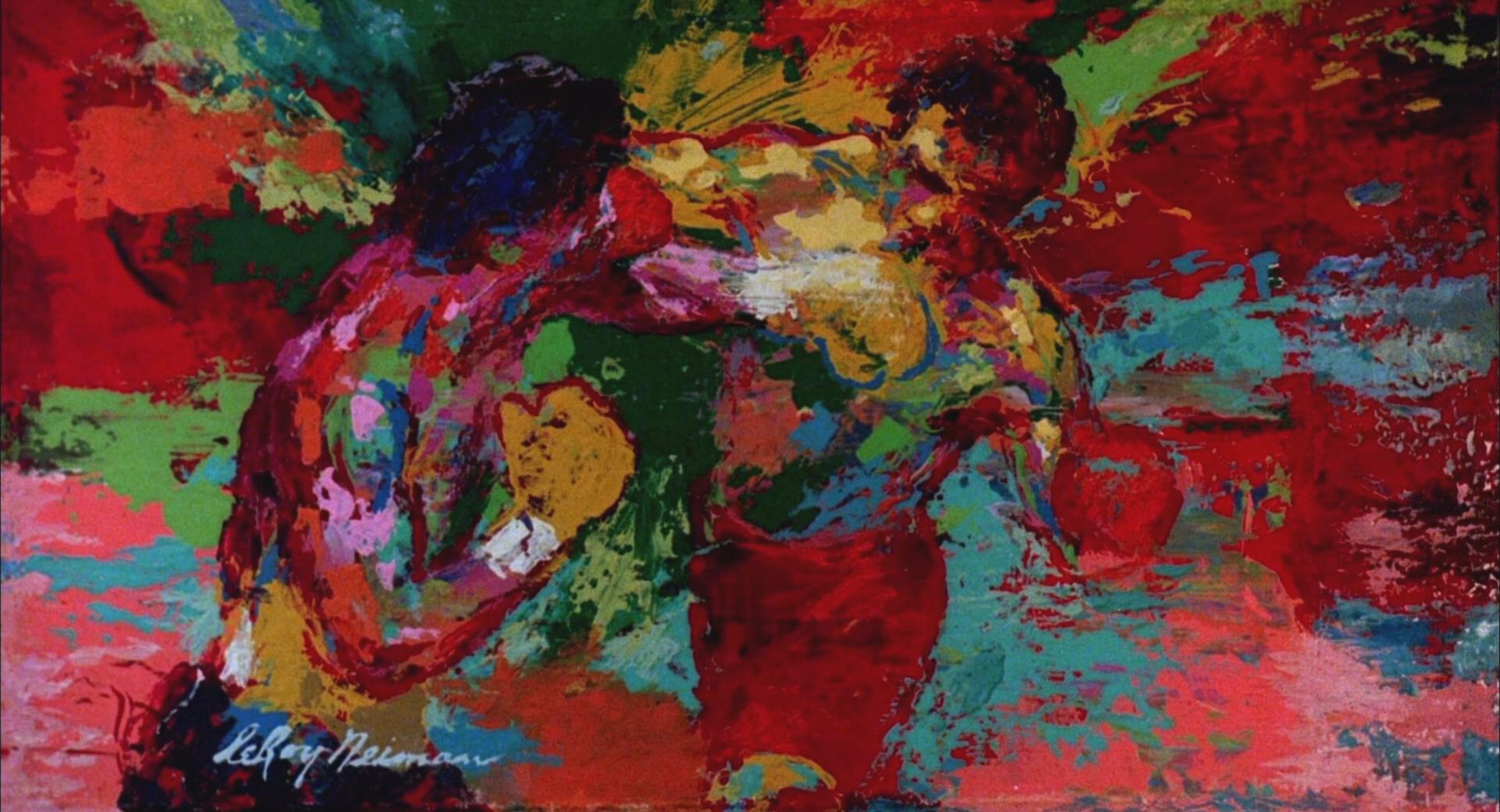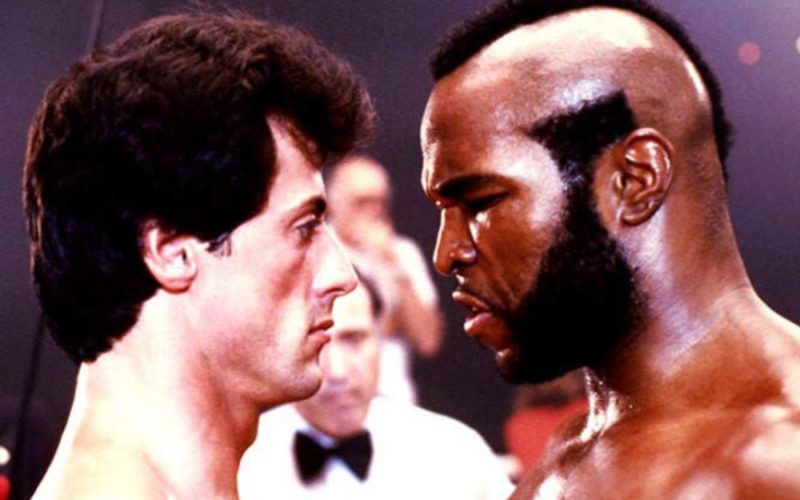Rocky III (1982).
With 1979’s Rocky II now seemingly putting an end to the story, the challenge for Sylvester Stallone to somehow continue to carry on with the character that essentially gave him a career would prove to be far too tempting to resist and inevitably Rocky III was released in 1982.
Stallone knew that he couldn’t pit Balboa against Apollo Creed yet again. Ironically, in reality there would have been massive demand for a rubber match between the two fighters but the cinema-going audience would perhaps find this a bit too reputative and he would instead need to find a new foe for the Southpaw slugger.
As time had now passed into the 1980s, Stallone embraced this bold new decade’s opulence and the third film in the series has a much larger and grander scale to it than the two previous films. For this film, Stallone would push the boundaries of the character much further than he had previously and also push the boundaries of his physique, dropping his body fat down to just 3% through punishing training sessions whilst still being responsible once again, for the writing and direction of the movie.
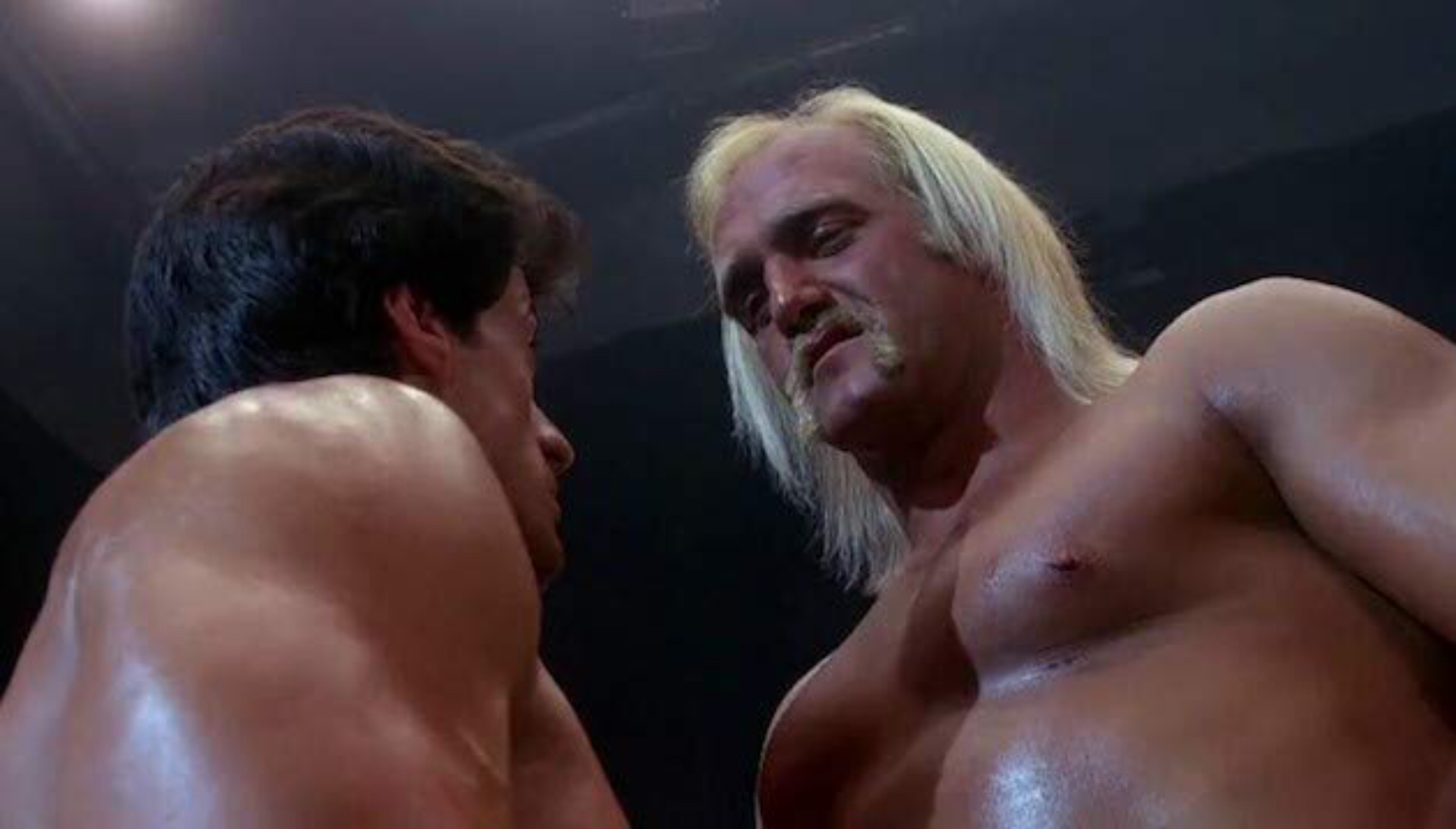
Whereas the second film opens with a recap of the ending to the original movie, this film opens with not only the recap of Balboa winning the title, but also a passage of time encapsulating the last three years in Balboa’s career in montage form featuring knockout highlights from a run of ten successful defences by the fighter, as well as small glimpses into the wealth that he’s accumulated through them. The money, houses and cars are all shown as well as the blood, sweat and tears of his ten title defences. In between the bouts we see snapshots of Balboa making TV appearances, appearing in commercials and magazine advertisements, one of which even shows Stallone behind the wheel of a DeLorean. That’s right, Rocky drove one long before Marty McFly hit 88 miles per hour!
Gone is the trademark hat and jacket and we now see a man who has achieved his dream. A smartly dressed sportsman and boxing ambassador. A man who has embraced his makeshift family and who has escaped the mean streets of Philly to live a life of luxury and comfort, having brought his trainer Mickey along for the ride too, moving his mean-talking mentor into his luxurious home. His wife Adrian no longer needs to shift heavy feed bags at the local pet store, she now also embraces a glamorous lifestyle whilst still managing to remain restrained and sensible, she still allows herself the odd fur coat along the way. Rocky is now more at ease with the limelight and fanfare that caught him off guard during his initial rise to glory. He’s no longer the one hit wonder, the flash in the pan, famous for only 15 minutes. He’s now an established figure-head, dominating the sport that had previously been so cruel to him.
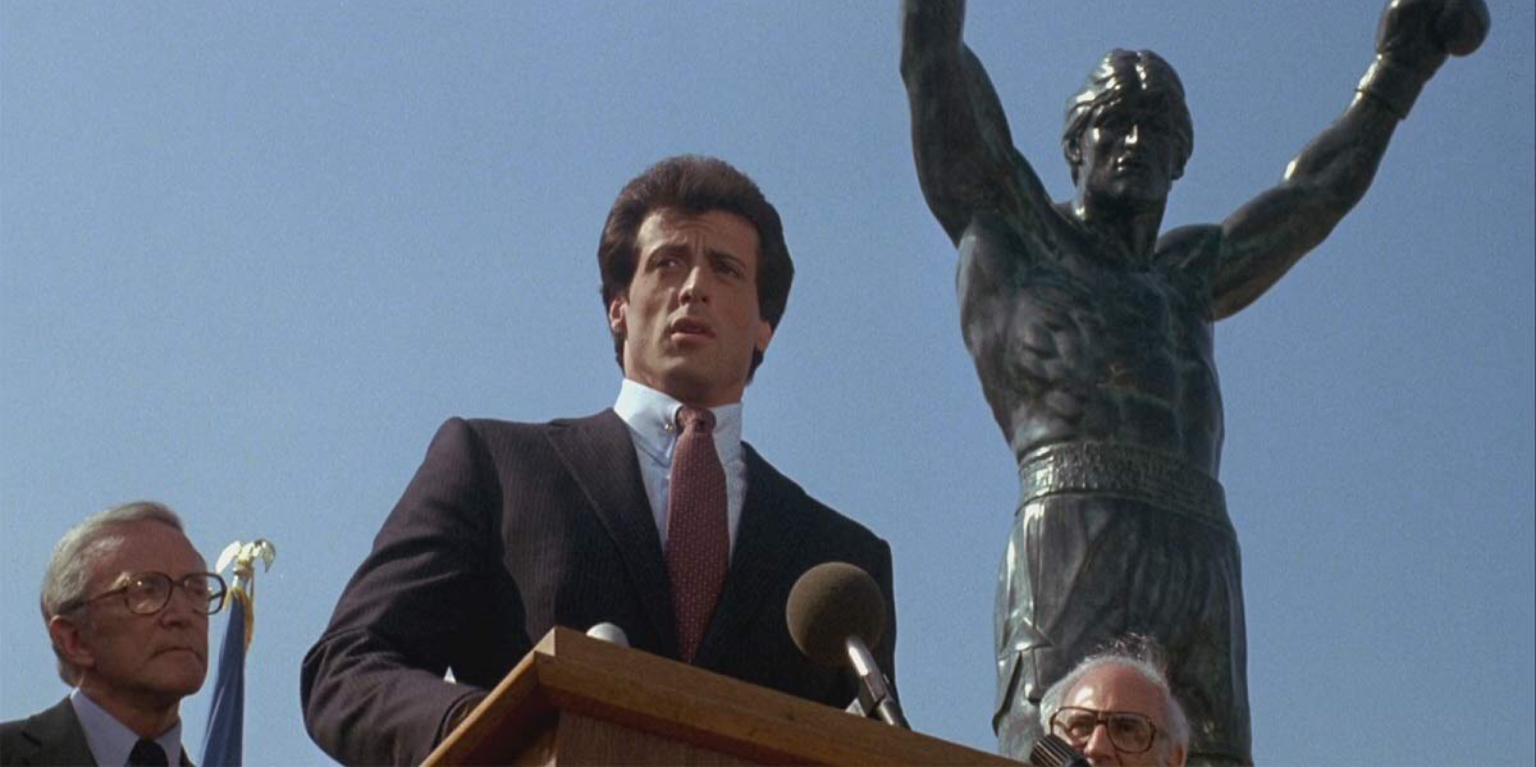
As always, Sly was on writing duties and he didn’t let us down, somehow managing to bring new zest to his iconic character in the third installment of his pugilistic anthology. Rocky was back and the audiences would surely rejoice and yet for the character to still work Stallone knew that he would once again have to make Balboa the underdog. For this to work Rocky would need to lose his title and for that, he would need a new opponent, one worthy of being able to rip the world title belt from his grasp.
The first full fight we see the Italian Stallion taking part in isn’t where this happens. Before we get to that, Rocky takes on the fictional wrestling world champ, “Thunderlips” played by the one and only Hulk Hogan. Stallone, as astute as ever, had noticed the growing popularity of the then WWF Wrestling phenomena and wrote in quite an entertaining – if not at all realistic – mock battle that sees the two men entering into a Boxing Vs Wrestling charity match which eventually results in both men being thrown out of the ring before the match is declared a draw. Whilst this may seem a stretch of the imagination it should be pointed out that similar events had taken place before Rocky III, including Muhammad Ali vs Antonio Inoki in Tokyo in 1976 and the “real life Rocky”, Chuck Wepner’s match up with a wrestler, pitting him against the now legendary Andre The Giant, which took place beforehand as a undercard match at Brooklyn’s famous Shea Stadium which was staged beforehand to help promote the closed-circuit broadcast of the Ali vs Inoki fight with approximately 30,000 people in attendance to witness this most unorthodox sporting spectacle.
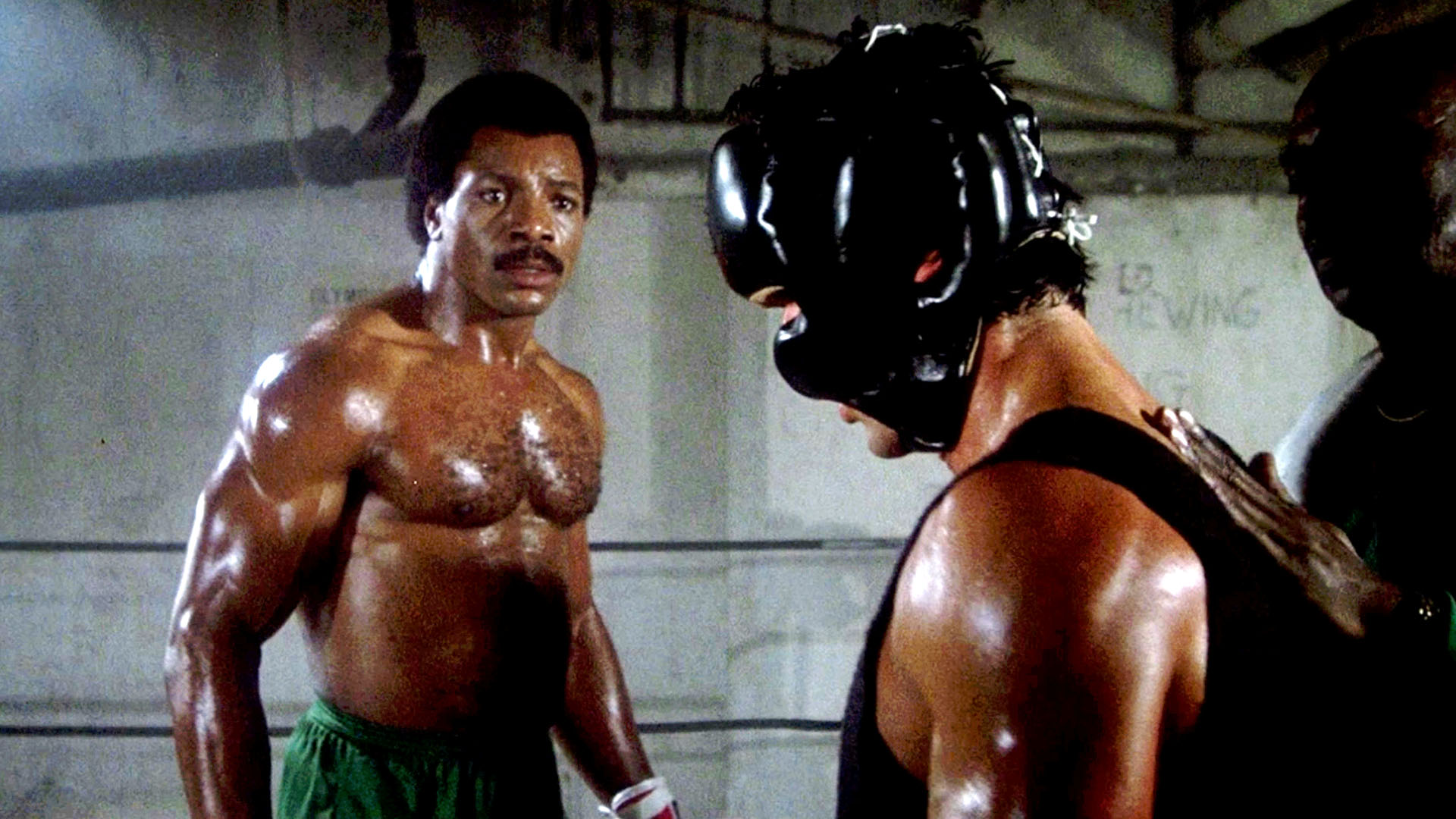
With this almost self-admitted lean towards silliness out of the way, we’re introduced to the film’s real villain in the form of the now infamous Clubber Lang, played by none other than Mr. T. A street tough, bad-ass who challenges Balboa to one more fight just when Rocky is announcing his retirement at the unveiling of a statue in commemoration of “Philly’s favourite son”. A large bronze statue of Balboa sat high atop the Philadelphia Museum steps he used to run up in preparation for the Creed fights.
Mr. T would of course go on to play the tough guy with a heart in the form of the A-Team’s B.A. Baracus, but there’s no hint of compassion in his portrayal of Lang. In fact, one could say that he takes inspiration from the reign of Iron Mike Tyson. The only problem with that comparison being that Clubber Lang arrived in the spotlight years before Tyson actually did. A few choice remarks from Lang towards Adrian is enough to have Balboa requiring restraint from starting the fight there and then.
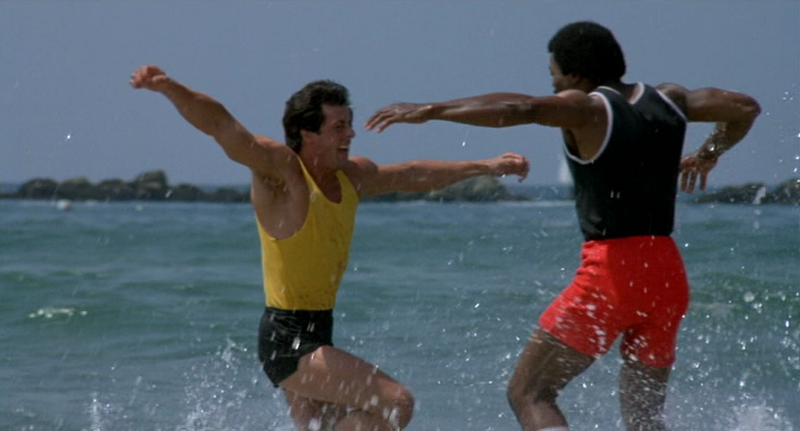
With a fight now on, Rocky is shocked to find that his mentor Mick disapproves and initially the old pug refuses to train him. When pushed as to why, Mick reveals to his student that he’s been hand picking opponents to give Rocky an advantage, protecting his protege after the damage he absorbed in the two Creed fights. With Rocky’s pride now dented, he begs his trainer for one more fight and the two men eventually agree to a final match-up.
With the Rocky training montage now a firm staple of these films, Rocky III relocates to a training camp. Gone are the old sweaty confines of Micky’s gym, replaced with public arena workouts in a swanky hotel. Rocky is seemingly still seduced by the cult of his personality and refuses to focus on the upcoming match. With a less than stellar preparation, Balboa is dealt an even bigger blow when Mick suffers a heart attack after being caught up in a pre-match scuffle between Lang and Rocky on their way to the ring. Backstage, Rocky goes into meltdown and tries to cancel the match before a slap across the face from Mick convinces him otherwise. Predictably his head is not in the game and after starting off positively with big hooks in the opening minute, he’s brutally battered by the stronger and much harder hitting Lang. Bruised and beaten, Rocky must then return to his dressing room to find his mentor Mick struggling for breath, Mick asks Rocky for the result of the fight and misinterprets the second-round knockout reply to mean a victory for his student. Rocky looks on and watches Mick smile as he passes away, before letting out a visceral series of cries, akin to that of a wounded beast as he realizes that his friend and mentor has gone.
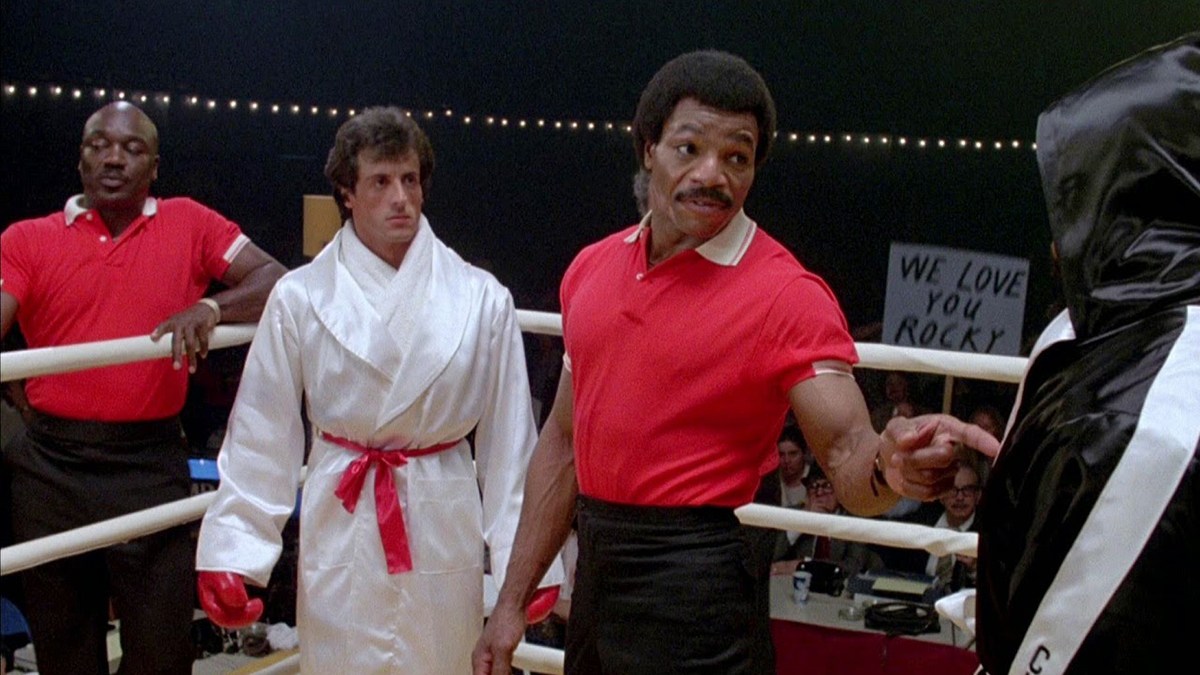
After a period of mourning, Balboa is approached by his former arch enemy Apollo Creed with a very interesting proposition. Creed offers to help train him for a Lang rematch, citing that Balboa can come back victorious if he regains “The Eye Of The Tiger” that he had when winning the title from his Creed. On the subject of this line of dialogue, it would be remiss not to mention the iconic song by Survivor. It’s surely almost as recognizable as Bill Conti’s “Gonna Fly Now” and was chosen over several other options including, “You’re the Best Around” by Joe Esposito, which eventually found its rightful home in the original Rocky director John Avildsen’s other breakout hit, 1984’s The Karate Kid. Stallone is said to have approached Survivor personally, his only request being that they wrote him a song as good as Queen’s “We Will Rock You”, no pressure there then! Legend has it that the title track was written and ready to perform within a few hours.
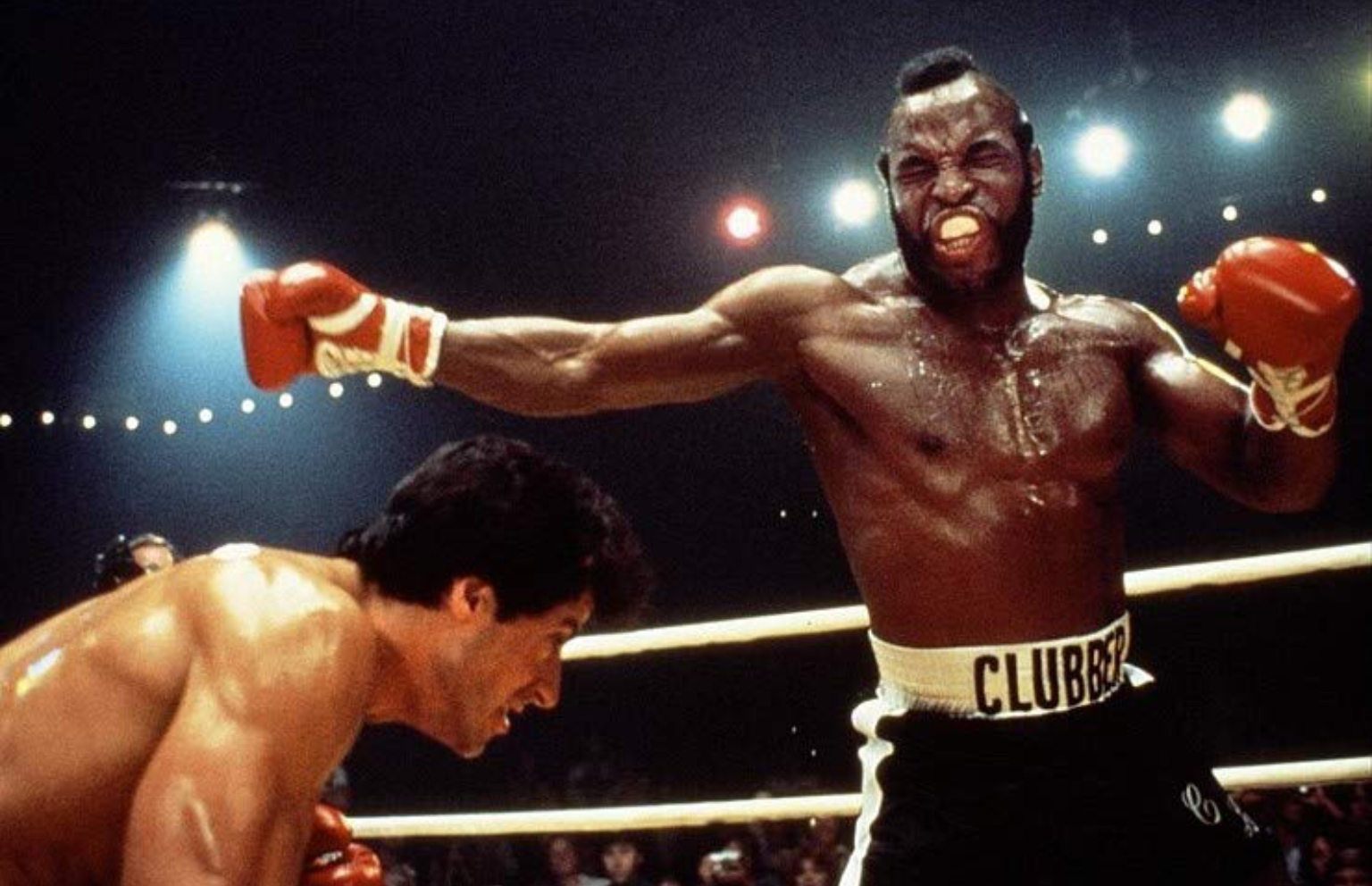
With this new-found training regime set up, the road back to glory will still be difficult for the Italian Stallion. With everything he fought so hard for seemingly taken away from him, it would of course seem to be easy for him to just retire in peace. Even though Mick told him that the ten defences he made were a result of clever match making, he still beat those fighters and will always remain a champion of high standing as a result, and yet this will never be enough for him. He needs to prove himself all over again, not just to the watching fans but most importantly to himself, to know that he really was the champion that he had believed he was prior to the loss to Lang. In many ways all that he has previously achieved will mean nothing to him without the redemption of a rematch victory. Without much hesitation Balboa accepts Creed’s promotional offer of a second bout to be staged in Madison Square Garden. Creed then takes the now former champion and new student back to where it all began for him in California, to his original gym where with the assistance of Apollo’s former trainer Duke, they begin to totally remodel the Balboa fighting machine, making him leaner, faster and more skillful than he ever was. Rocky must not only struggle to learn this new way of fighting, he also has to combat his psychological demons as well. At first Rocky struggles before a heart to heart with Adrian reveals something far more telling, that Rocky is scared. Not so much about what Lang will do him, but rather the prospect of losing his family as a result. With his wife’s steely determination and wise words, Balboa soon rediscovers his mojo and we are treated to perhaps not only one the most uplifting, but also most realistic training montages in the series with Rocky using proper boxing and calisthenic techniques in the form of swimming and sprints, all leading to a final scene in which he’s finally able to outrun Apollo along the beach shoreline, before both men jump in the sea hugging and slapping each other on the back. Over the years, this scene may have aged slightly and is now somewhat prone to mockery, but in its defence, it’s hardly the volleyball scene from Top Gun!
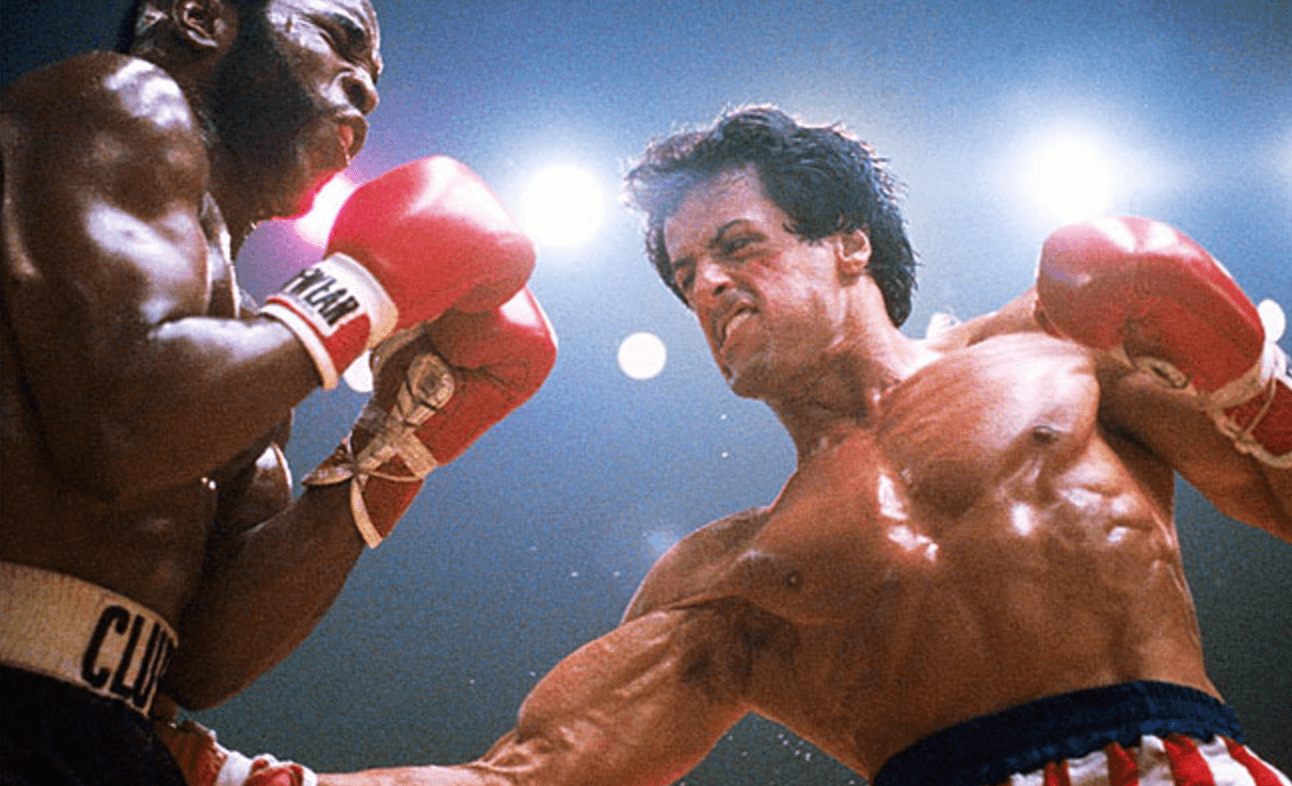
Moving onto the fight itself and the rematch again differs significantly from what we’ve seen in the previous two films as it is not a 15 round war. Instead what we’re treated to are three rounds of thrilling action, with Rocky initially gaining the upper hand through skill before seemingly submitting to his old fighting habits to slug it out with Lang. As we reach the third and final round, it becomes clear that Rocky is in fact using his iron chin to tire Lang out and once again by employing rocket fast jabs and the speedy combinations he has now mastered to knock out his flagging opponent. Stallone once again captures the essence of what makes his character so endearing with this new take on the Rocky blueprint of what an on-screen fight should be. Rocky may have lost the title as a result of his losing the hunger, drive and determination that got him it in the first place, but it’s also important to remember that without the new techniques he learns from his former nemesis, he may well have never got the return victory he craved so desperately. In fact, it’s impossible to say with any assurance that either Rocky or Apollo could have ever beaten Clubber using the tactics they respectively employed in their previous fights. The movement and skills that Apollo has now taught the Italian Stallion do play a part, but Apollo is quick to remark to his trainer Duke during the training camp that even with this newfound fighting style, Balboa will need to take Lang out early and that after seven or eight rounds, Rocky will be spent and likely knocked out once again. This begs the question as to whether Apollo would have fared any better, as Rocky will eventually need to go back to his old, aggressive come forward style to tire Lang out mid-fight. Is this something that Creed would have even thought of, or been able to apply to hold off the furious onslaught that Clubber would bring? Sure, Apollo is tough. We’ve already seen the former champion engage in two wars with Balboa, but it was truly Rocky’s heart and iron-like fortitude that made Apollo eventually succumb. For the villain of the piece to have any real gravitas, he would need to be more of a fearsome figure than the two other familiar pugilists and having it require their coming together to take the mighty Clubber down together pays off beautifully. Of course, we would later see this trick of Rocky and Apollo teaming up played out again in the fourth instalment of the franchise, but we’ll save that for now.
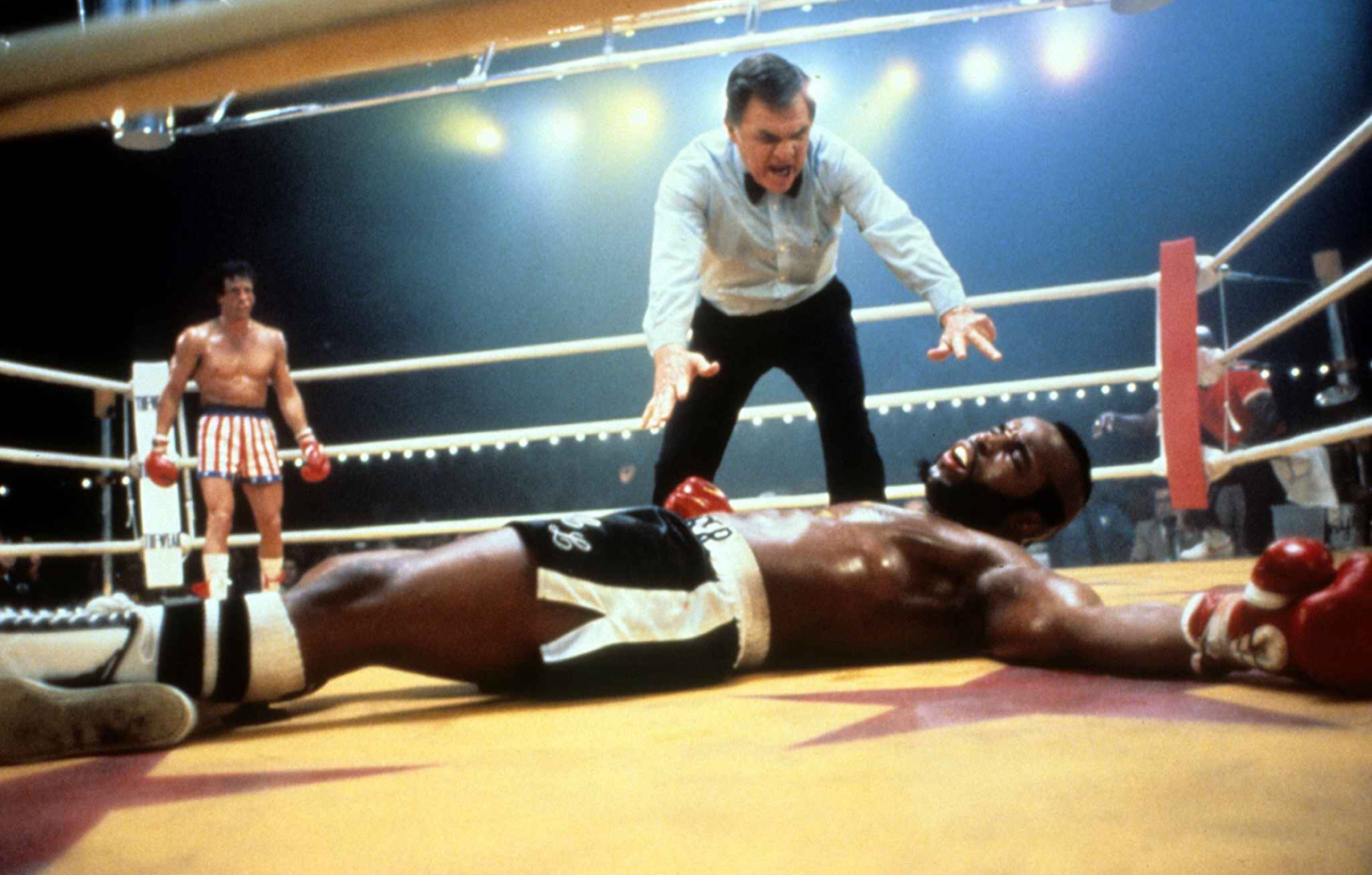
There’s something so rewarding about seeing Rocky and Apollo bury their rivalry and become friends. As is sometimes the case with real life fighters, once the battles have ended and are merely an entry in the record books, many boxers find a shared bond emerges from their brutal encounters and this newfound friendship would later set up the premise for not only the fourth installment of the franchise, but eventually be used as the catalyst for the Ryan Coogler spin off in 2015’s Creed. This Balboa and Creed team-up leans heavily towards the ethos that Stallone initially applied to the original Rocky story. That even the toughest of competitors will need a solid team of people who love him and support him to help him truly excel.
Rocky III marks a move towards a more glamourised change in tone where the decade in which the next few films were made has a definite imprint on the film’s more excessive leanings, but for me it will always be one of my favorites. I practically wore out my original VHS copy, specifically watching the final training montage before my two-bus journey to the boxing gym as an aspiring boxer in my teens. Even to this day, I still can’t manage to replicate the head movement on the reaction ball that Rocky did and will never spear a fast jab the way Apollo could, but it never stopped me trying as a kid. For this third film in the series, Stallone had began to realize that there was indeed much potential for future stories in the life of Rocky Balboa, even if it meant losing out on some of the grit and realism of the original story in favour of an even bigger tonal shift and a fourth film that certainly wasn’t afraid to fully embrace the excess of the 1980s.
Film ‘89 Verdict – 8/10
